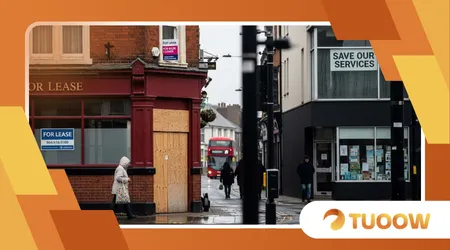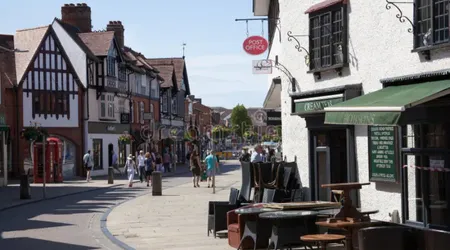What the Business Rates Cut for Shops and Pubs Means for Local Community Services

Business Rates Cut for Shops and Pubs represents a crucial intervention designed to revitalize the UK’s struggling high streets and safeguard essential local venues.
This policy grants eligible retail, hospitality, and leisure properties a significant relief on their property taxes, aiming to foster economic activity.
Supporters argue this much-needed reprieve will allow independent businesses to reinvest, expand, and crucially, remain open against severe economic headwinds.
Many local businesses, battered by inflation and post-pandemic shifts in consumer habits, desperately need this support.
Yet, understanding the full scope of this fiscal move requires looking beyond the immediate benefit to the high street itself.
The policy’s true test lies in its long-term impact on the council budgets that fund vital community programs, which largely depend on this specific tax revenue stream.
Why Was the Business Rates Cut for Shops and Pubs Implemented?
What Economic Pressures Did the Government Address?
The government introduced the Business Rates Cut for Shops and Pubs primarily to combat a persistent crisis facing the physical retail sector.
High streets across the nation were witnessing unprecedented closures, often leaving gaping holes in the local economic fabric.
High business rates were frequently cited as a major contributing factor, making physical stores financially unviable compared to online competitors.
Furthermore, the hospitality sector faced a compounding issue: rising energy costs combined with increased supply chain expenses decimated profit margins.
The relief was specifically targeted at these vulnerable sectors, recognizing their essential role as both employers and social anchors within British towns and cities.
This strategic tax adjustment aimed to create a more level playing field for struggling local entrepreneurs.
++ How Energy Bill Support & Cost of Living Grants Are Being Changed Under New Plans
How Does This Tax Relief Directly Support Local Businesses?
This relief functions by drastically reducing the total payable rates for eligible properties, often through a government-funded discount.
For example, a small local pub might see its annual rates bill reduced by 75%, up to a cap of £110,000 per business, a substantial saving.
This immediate injection of capital acts as a lifeline, enabling struggling shop owners to cover rent, pay staff, or invest in much-needed refurbishments.
The policy aims to stimulate investment by freeing up capital that would otherwise be channeled directly to the local authority.
This reinvestment encourages growth, which ideally should generate more employment and ultimately boost other forms of local tax revenue.
The immediate survival of these community businesses is seen as a crucial first step toward broader economic recovery.

How Do Business Rates Fund Local Services and What is the Mechanism for Compensation?
Where Do Business Rates Revenues Go?
Business rates, technically known as Non-Domestic Rates, constitute a substantial portion of the revenue stream for local authorities in England.
These funds are pooled centrally, but a significant proportion is then returned to councils to pay for essential, non-statutory local services.
This money funds everything from public libraries and youth clubs to local parks maintenance and crucial services for vulnerable adults and children.
The health of local council budgets is inextricably linked to the collection of these rates, making any significant reduction a direct pressure point.
Any decrease in this primary income source can force councils to make difficult choices about service provision and staffing levels.
The revenue from business rates is a foundation for local governance and community support infrastructure.
Also read: Youth Job Guarantees: What the UK Government Means for Young People on Universal Credit
Is the Government Compensating Councils for the Loss of Rates?
Yes, the government compensates local authorities for the rates they do not collect under the scheme via a system of ‘Section 31’ grants.
These grants are intended to ensure councils do not suffer a direct, immediate loss in revenue required for local services due to the Business Rates Cut for Shops and Pubs.
The mechanism aims to make the policy budget-neutral for local government finances.
However, the efficacy of the Section 31 grant mechanism is a frequent point of contention, especially in an environment of high inflation.
Critics argue that while the grants cover the numerical loss of tax, they often fail to compensate fully for rising service delivery costs, leading to a subtle, yet real, squeeze on local finances.
The administrative complexities of processing and reconciling these grants also place an additional, often unfunded, burden on council teams.
Read more: How to Apply for Reintroduced Maintenance Grants if You’re a Student from Low-Income Family
What is the Potential Impact on Essential Community Services?

Will Libraries and Youth Centres Face Budget Cuts?
The risk to community services like libraries and youth centres is subtle but pervasive, even with the compensation mechanism in place.
As local authorities face increased demand for statutory services, such as social care, their flexible budget is often the first area targeted for cuts.
A perceived stability in business rate funding, masked by compensation grants, may prevent councils from pushing for truly sustainable long-term revenue solutions.
If the Section 31 grant compensation does not keep pace with the real-terms inflation of running costs an increasingly common scenario in 2025 the money effectively available for discretionary services shrinks.
Local councils might then have no option but to reduce library hours, scale back youth programs, or postpone essential maintenance on community buildings.
This gradual erosion of community infrastructure is the hidden consequence of an otherwise positive tax break.
The Fiscal Domino Effect: An Analogical View
Consider the national economy as a large house, and the local economy as a garden outside.
The Business Rates Cut for Shops and Pubs is like fertilizing the garden it helps the plants (shops and pubs) grow and flourish, which is excellent.
However, if the fertilizer is paid for by reducing the water supply to the basement (the council services budget), the house’s foundation will eventually weaken.
Although the government provides a hose (the S31 grant), if the hose is too short or the water pressure is too low, the foundation still receives less than it truly needs.
This analogy shows that simply backfilling the lost revenue with a grant is not enough to secure the long-term vitality of services.
The policy must ensure that the total resource envelope available to councils grows in line with the genuine cost of providing services, a challenge often missed in national policy formulations.
Example of Local Disruption: The Case of the Community Hall
In a recent example from the Midlands, a local council had to delay the refurbishment of a vital community hall used for elderly day care and food bank operations.
Although the council received the Section 31 grant to cover the Business Rates Cut for Shops and Pubs relief, high local authority inflation on construction contracts exceeded the grant’s actual value.
The council, constrained by a tight budget, chose to prioritise statutory care services, leaving the community hall project paused.
This pause directly impacted local community resilience, delaying the hall’s ability to host essential, preventative health services.
It illustrates how the national-level policy, while well-intentioned for the high street, can create unintended negative consequences on the ground for non-commercial community assets.
Can the Business Rates Cut for Shops and Pubs Lead to Long-Term Local Benefit?
What is the Argument for a ‘Trickle-Down’ Effect on Local Finances?
Proponents of the cut argue for a positive “trickle-down” effect that will ultimately benefit local finances.
By encouraging high street stability and growth, the policy is expected to lead to greater economic dynamism, generating more high-value jobs.
This success should result in higher collection rates for other local taxes, such as council tax and parking revenues, over time.
A thriving local economy also reduces the demand for certain council services, such as job-seeking support and some welfare benefits.
Therefore, while the immediate revenue stream from business rates may be reduced, the net effect on the council’s financial health could eventually be positive.
What Does the Data Say About the Impact of the Business Rates Relief?
While the direct impact of the Business Rates Cut for Shops and Pubs on community services is complex, existing research provides a context for the magnitude of the policy.
The Institute for Fiscal Studies (IFS) has previously noted the critical role of business rates.
The latest available data from the Ministry of Housing, Communities & Local Government (MHCLG) confirmed the immense scale of this intervention.
For the fiscal year 2024/2025, the total cost of the Retail, Hospitality and Leisure Business Rates Relief in England alone was projected to be in the order of £2.4 billion.
This staggering figure underscores the direct financial relief offered to businesses but also highlights the massive compensation burden placed on the central government and the corresponding risks to local authority stability if that compensation is inadequate.
| Category | Typical Rates Relief (Discount) | Estimated Annual UK Sector Saving (Example) | Primary Policy Goal |
| Retail (Shops) | 75% | £90,000 | High Street Preservation & Investment |
| Hospitality (Pubs) | 75% | £50,000 | Energy Cost Mitigation & Survival |
| Leisure (Gyms/Cinemas) | 75% | £75,000 | Social & Community Engagement |
Conclusion: Balancing High Street Health with Community Resilience
The Business Rates Cut for Shops and Pubs is a necessary short-term policy, a vital tourniquet for struggling high streets.
It undeniably provides immediate relief and prevents widespread business failure, preserving the character and employment base of local areas. However, we cannot ignore the subtle, yet serious, fiscal pressure it places on local authorities responsible for community services.
The government’s Section 31 grants are a temporary fix, not a guarantee of long-term funding parity, especially with inflation eroding their real value.
The central question remains: Is our high street thriving if the library next door is forced to close its doors early, or if the youth club loses its funding?
Share your experience with local service changes in the comments below. We need to debate how we fund our community infrastructure in a post-rates-relief world.
Frequently Asked Questions (FAQ)
What are Business Rates?
Business Rates are a tax charged on non-domestic properties in the UK. They are essentially the commercial equivalent of Council Tax for residential properties.
Who is Eligible for the Relief?
The relief is specifically for properties used for retail, hospitality, and leisure, such as shops, pubs, restaurants, cafes, cinemas, and gyms, with relief caps and eligibility criteria set by the government.
How Long Will the Cut Last?
The specific percentage and rules for the Business Rates Cut for Shops and Pubs are set annually by the Chancellor in the Budget and have typically been applied for a single financial year, although they have been repeatedly extended.
Why Does the Policy Affect Community Services?
Local authorities use business rates revenue to fund discretionary services (like libraries and parks).
Even though the government provides compensation grants, rapid inflation can cause the real value of the grant to decrease, forcing cuts in these non-statutory services.
